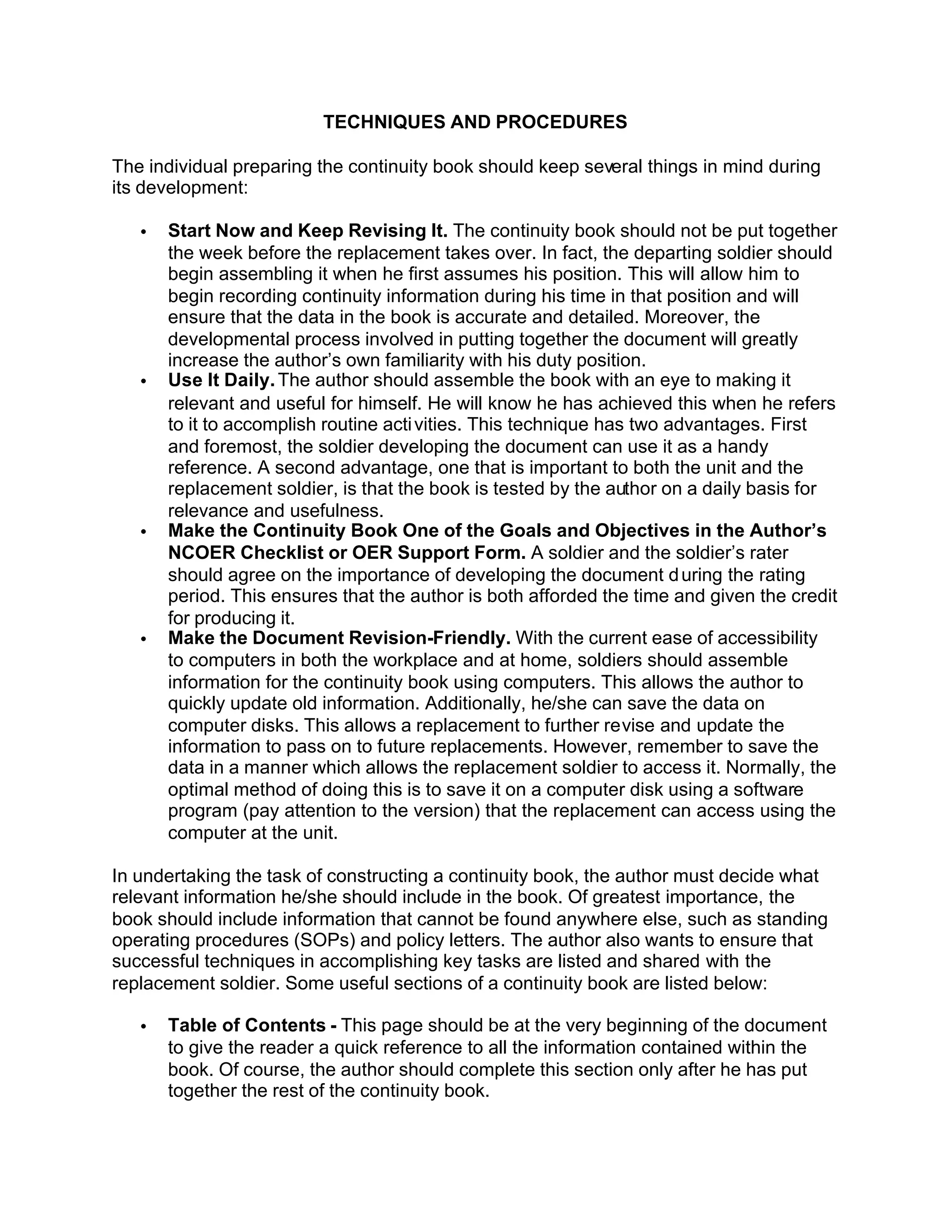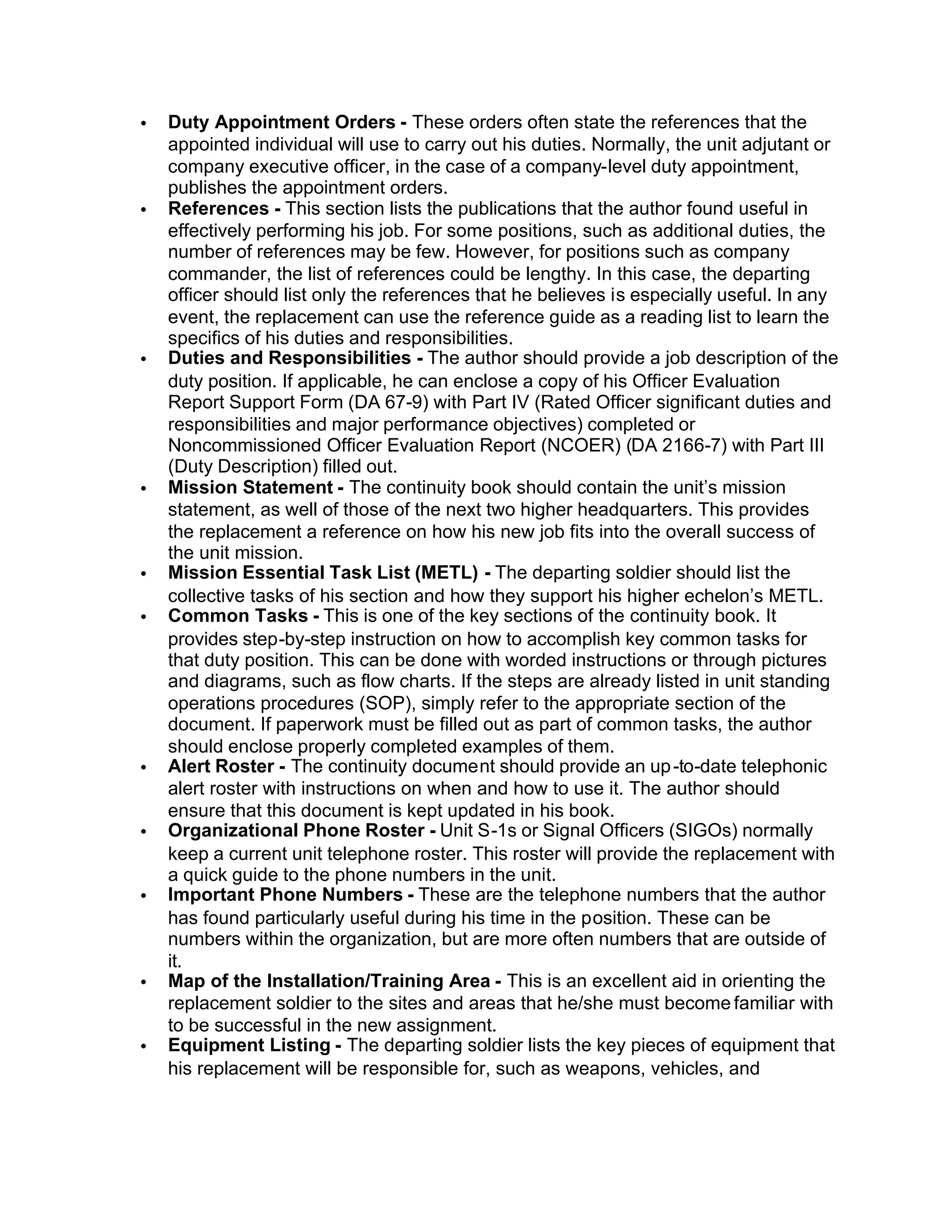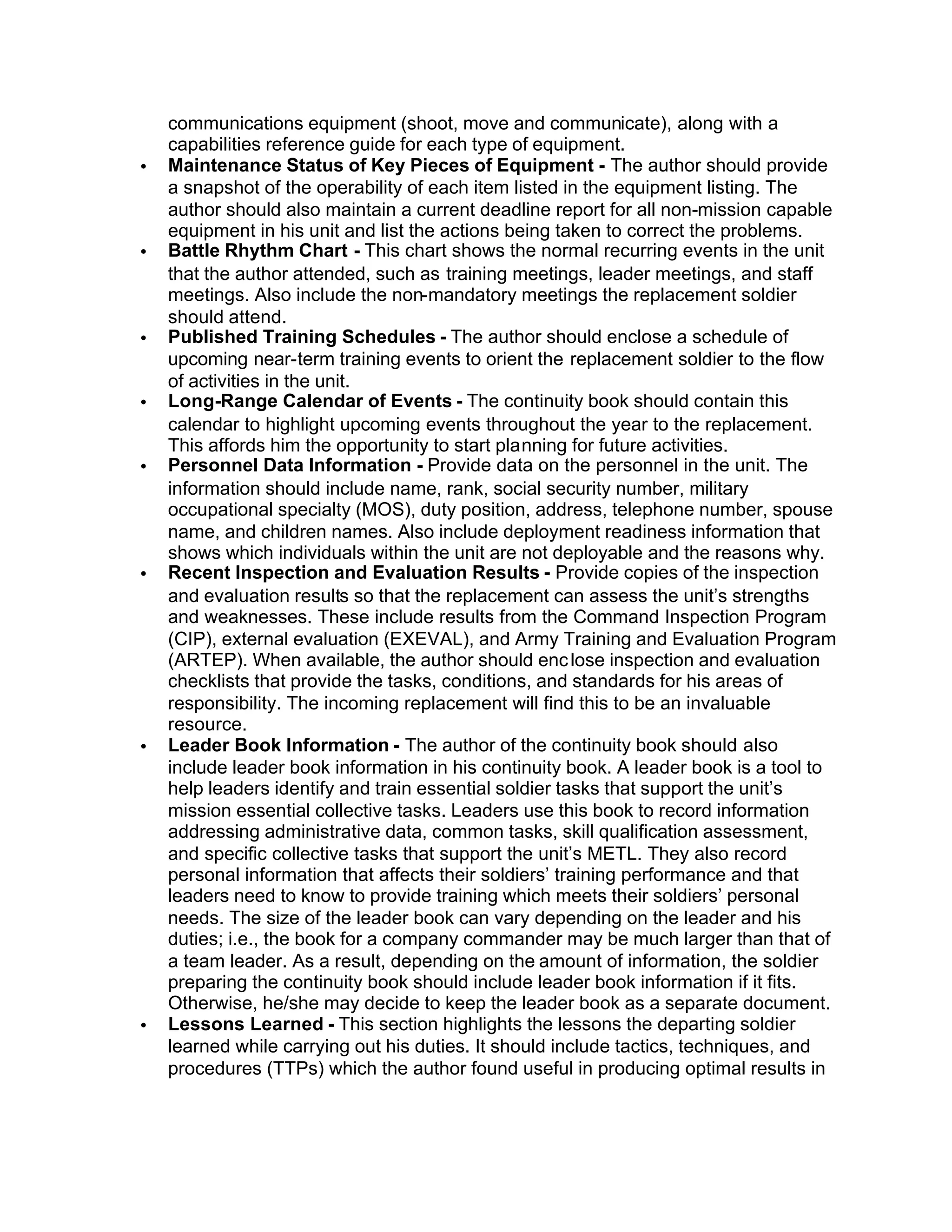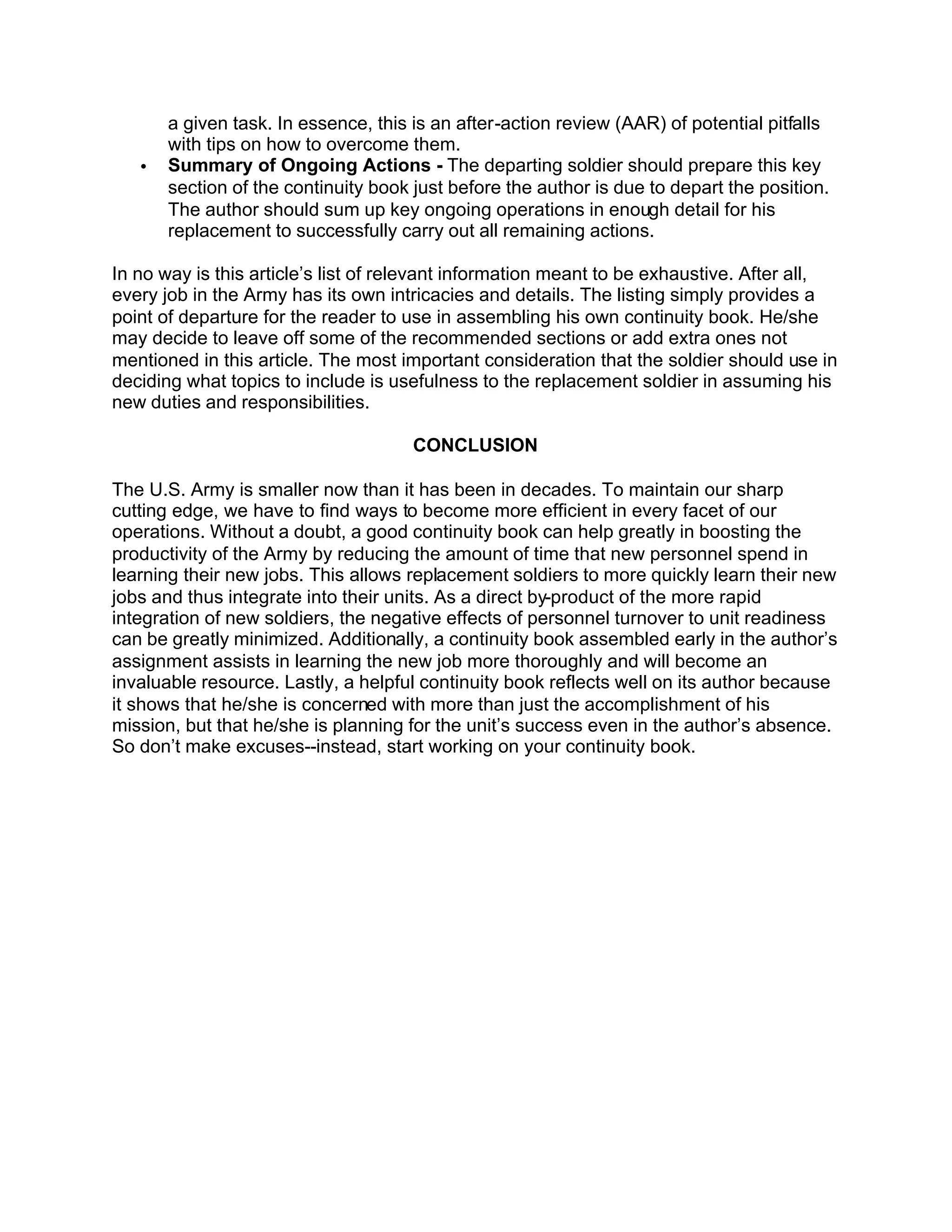The document provides guidance on creating an effective continuity book to assist soldiers transitioning into new duty positions. It defines a continuity book as a reference document produced by an individual to share relevant information about a duty or position. The document recommends starting the book early and revising it regularly so the information is accurate and useful. Key sections to include are references, duties and responsibilities, common tasks, contact lists, equipment details, and schedules. An effective continuity book saves replacement soldiers time learning their new roles and ensures efficiency during leadership transitions.




